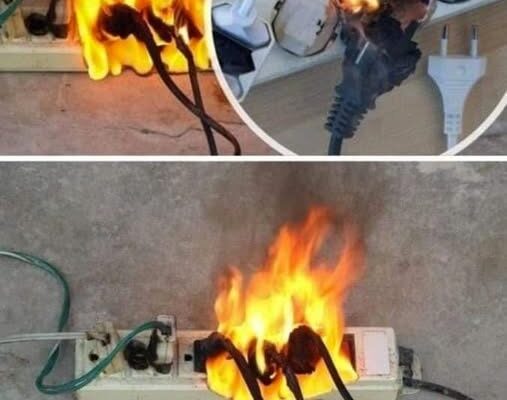
Power strips are an everyday convenience, allowing us to power multiple devices from a single wall outlet. However, not every appliance is suitable for this arrangement. Misusing power strips can lead to overheating, equipment damage, or even electrical fires. Here are nine devices you should always plug directly into a wall outlet instead of a power strip:
1. High-Wattage Kitchen Appliances
Devices like microwaves, toasters, air fryers, and coffee makers demand significant amounts of energy to operate. Power strips aren’t designed to handle such high loads, which can lead to overheating or tripping the circuit.
2. Refrigerators and Freezers
These appliances require a constant, dedicated power source. A power strip might not provide the consistent voltage needed, leading to potential malfunctions or spoiled food.
3. Space Heaters
Space heaters draw large amounts of power and generate heat, posing a double hazard when used with power strips. This combination significantly increases the risk of electrical fires.
4. Air Conditioners
Air conditioners are another high-energy appliance that should never share a power strip. Their heavy power usage can easily overload the strip and cause damage to both the strip and the air conditioner.
5. Hair Dryers and Styling Tools
Personal care devices like hair dryers, curling irons, and straighteners consume a lot of electricity in short bursts. Power strips may not be able to handle the surge, leading to overheating or short circuits.
6. Power Tools
Tools like drills, saws, and sanders need bursts of high power, which can overwhelm a power strip. For safety and efficiency, always plug them directly into a wall outlet.
7. Large Televisions
Modern TVs, especially larger ones, consume a lot of power and should ideally be connected directly to a wall outlet. This ensures stable voltage and protects the device from potential power strip issues.
8. Medical Equipment
Devices like CPAP machines, oxygen concentrators, and other critical medical equipment need a stable and reliable power source. A power strip introduces unnecessary risk and may compromise performance during an outage.
9. Extension Cords
Never daisy-chain extension cords and power strips. This setup increases the electrical load on both devices, creating a significant fire hazard.
Why It Matters
Power strips are designed for low-power devices like chargers, lamps, and computers. Overloading them with high-powered appliances can lead to overheating, tripped breakers, or dangerous electrical fires. By being mindful of what you plug into your power strip, you can protect your home and appliances.
When in doubt, always check the wattage of your device and the maximum capacity of your power strip. For critical or high-power appliances, plugging them directly into a wall outlet is the safest choice.



